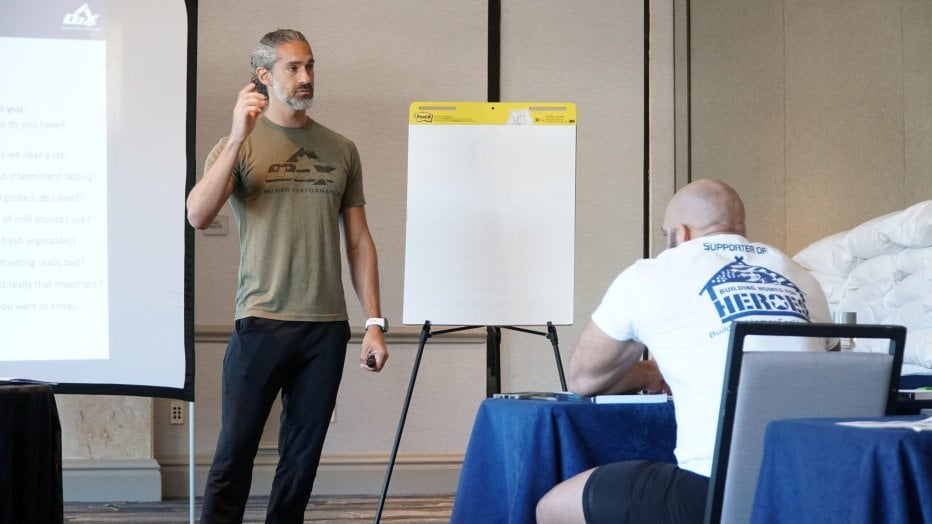Stress Mitigation for Firefighters

By O2X Resilience Specialist Jennifer Pugh, LICSW
Experiencing stress to some degree is a known effect of any occupation. Shift work, workplace culture, employer bureaucracy, and management of home life stressors while at work are just some of the many factors that can contribute to the experience of acute or chronic stress over the course of one’s career. Unlike most occupations, however, first responders are also expected to respond to recurrent, emergent incidents in their communities that are often traumatic in nature.
In fire service, the cumulative effect of these stressors can often result in the development of mental health conditions, such as major depressive disorder (MDD) or posttraumatic stress disorder (PTSD). Experiencing either of these conditions can increase the already heightened risk of injury and other physical health concerns associated with fire service employment. Knowing that mental health stigma and limited access to applicable resources often prevent individuals from seeking help, it is imperative that all members of the fire service use and promote the use of basic stress management skills. Consistently incorporating any one of the following skills has been found to significantly mitigate the effects of stress over time.
Slow Your Breath
Most of us know the concept of “take a breath” when things get difficult, frustrating, or overwhelming. Ironically, we also know just how irritating it can be when someone suggests doing so when we’re already feeling this way. Interestingly, we’re actually missing the mark when we simply increase the depth of our inhales and exhales. Try this a few times, and you may notice symptoms like lightheadedness and numbness or tingling in your extremities – this is due to over-breathing. Instead, try to slow your rate of breath to four to seven inhales and exhales per minute. The goal is not to increase or decrease the amount of air you’re taking in, but rather to control the pace at which you’re breathing. A helpful tool can be to visualize a square in your mind. Spend four seconds tracing each side of the square: inhale for four, hold your breath for four, exhale for four, and hold for four. Now, repeat. Each time around the square will take you about 16 seconds, which means that in less than four cycles, you’ve achieved your brain’s ideal rate of breath. Once you get comfortable with this exercise, commonly known as box breathing, play around with the shape of your square (i.e., the length of time you spend on each side) – maybe you prefer to have longer inhales and exhales but shorter periods of holding your breath. So long as you maintain the slowed rate of four to seven inhales and exhales per minute, you’ve successfully practiced this skill. Given the limited time this takes, consider all of the scenarios when this skill might help you slow or reduce your stress response. For some, it may feel useful to employ this skill en route to a call. For others, this may be a great skill to facilitate effective transitions, like while commuting to and from work.

Know Your Support System
Spend a moment answering the following questions:
- Who are the people in your life that support you?
- Who helps facilitate an enjoyable time for you?
- When you need help, who do you trust to be there for you?
You may have identified individuals who fit in all three categories, and you may also have identified those who fit in one but not the others. Knowing who these individuals are, regardless of how you categorize them, has positive health benefits even without making contact. In fact, those who have perceived social support are able to experience some of the same health benefits as those who routinely engage in their support. While this is not permission to solely think of your friends or family members, it may be reassuring to know that when life gets busy, simply maintaining an active awareness of your support system can help mitigate the effects of stress.
Put Down the Brown
Culturally, we know that alcohol can play a big role in firehouse camaraderie and is often an “accepted” substance individuals turn to in an effort to relax. Unfortunately, frequent consumption of multiple alcoholic beverages is anything but relaxing for your central nervous system. Although you may notice temporary blunting of perceived stress and negative emotions, you’re likely to experience an increase in irritability and anxiety or worsening low mood in the periods of time between consumption. While the easiest solution would be to abstain or drastically reduce the frequency and quantity of alcohol consumption, this approach does not work for everyone. If you’re one of those folks, consider the option of alternating between alcohol and non-alcoholic beverages when drinking. Alternatively, set a goal for how many drinks you plan to limit yourself to. Then, commit to consuming them through measured means (i.e., standard pour size, directly from a can or bottle, etc.). Doing so will ensure that you’re actually consuming the amount of alcohol you intend to. Employing either skill by alternating drinks or going in with a plan can drastically reduce your overall consumption and, in turn, the effects that alcohol will have on your body and brain.

Create a Routine
Despite the reputation stress has, it remains an important aspect of optimal functioning. Therefore, the goal should not – and cannot – be the total elimination of stress. Utilizing any one of these skills can help mitigate the lasting effects of recurrent stress. Independently, each skill has been found to have both short and long-term health benefits. If you already find yourself practicing one or more of these skills, consider routinely engaging in all three to maximize your stress management efforts. Stress is an inherent part of the job, but the extent to which it impacts your life and affects your health is up to you.

About O2X Resilience Specialist Jennifer Pugh:
Jennifer Pugh, MSW, is an O2X Resilience Specialist and licensed clinical social worker with expertise in mental health skills training. With a focus on stress management, emotion regulation, effective communication, and crisis intervention, she has provided valuable support to servicemembers, veterans, first responders, and government employees. Jennifer owns a private practice and teaches graduate clinical courses at Boston College. She holds licenses in both Massachusetts and New York and is certified in Interpersonal Psychotherapy, Acceptance and Commitment Therapy, and Integrative Behavioral Couple Therapy. Her extensive experience includes individual and group therapy, case management, and psychoeducation in both inpatient and outpatient mental health settings. Jennifer’s personal connections to law enforcement and the military underscore her commitment to optimizing mental wellness. In her leisure time, she indulges in good food, outdoor pursuits, rest, and physical exercise.
About O2X Human Performance:
O2X Human Performance provides comprehensive, science-backed programs to hundreds of public safety departments, federal agencies, and the military. O2X works with clients to elevate culture, improve mental and physical wellbeing, support healthy lifestyles, and reduce healthcare costs associated with injuries and illnesses. Driven by results and cutting edge research, O2X programs are designed and delivered by a team of Special Operations veterans, high level athletes, and hundreds of leading experts in their respective fields of human performance.
Podcast
Contests & Promotions
















